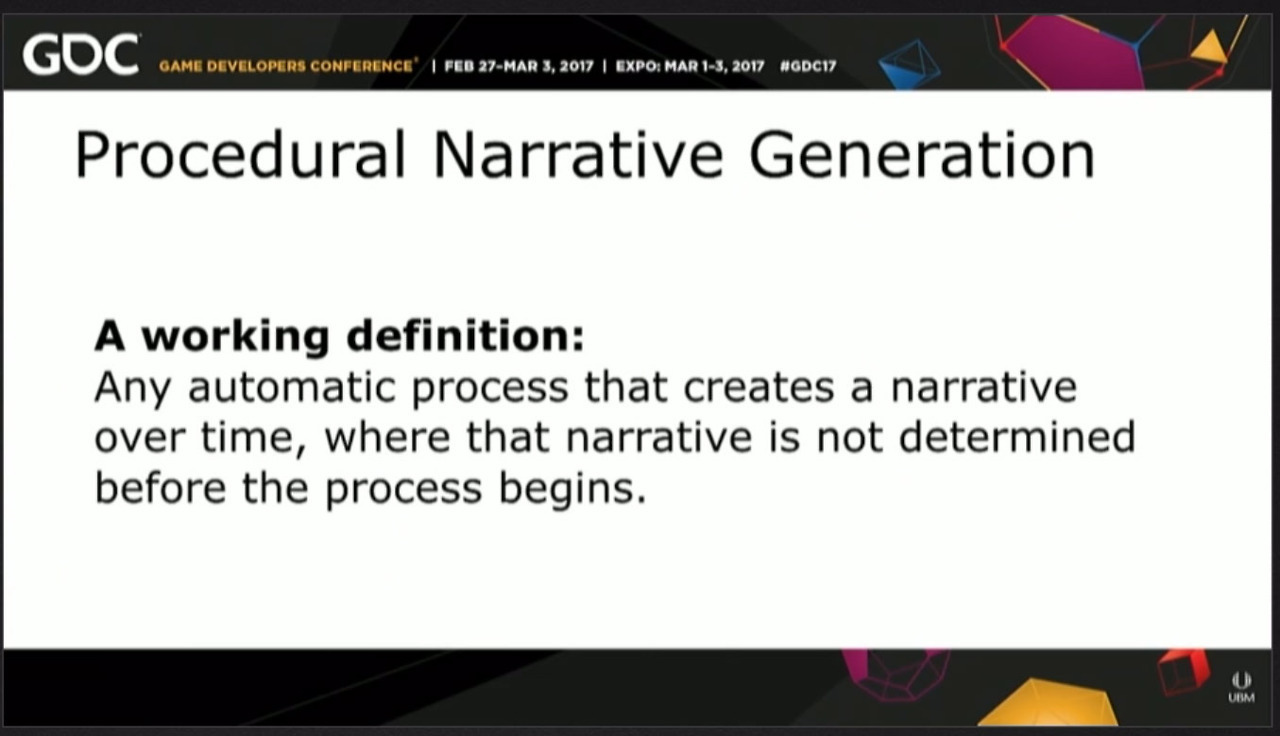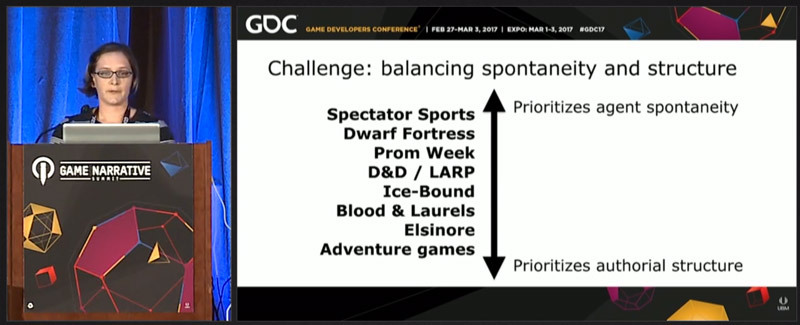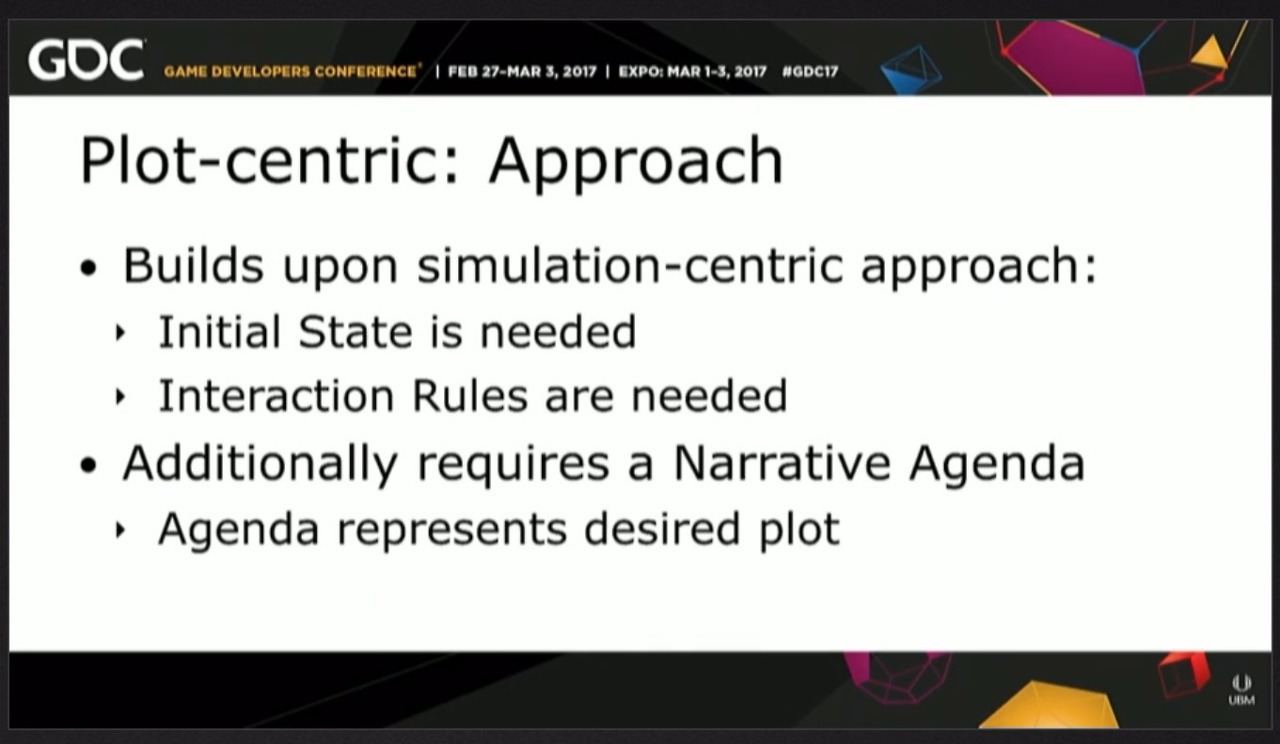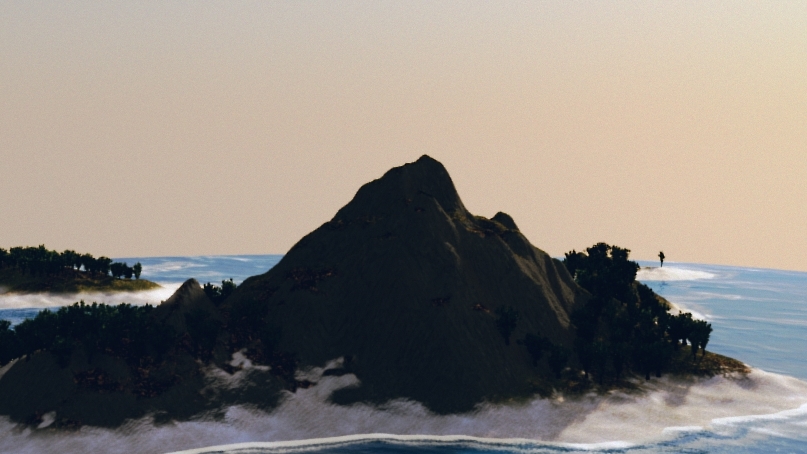





Best Practices for Procedural Narrative Generation
This GDC talk, by Rogelio Cardona-Rivera and
Chris Martens gives a high-level overview of different approaches to generating procedural narrative. They cover the whole spectrum, from the simulation of Dwarf Fortress to plot-centric things like Façade to new frontiers of discourse-centric narratives.
It’s mostly a look at the different techniques, with some dives into the details of implementing some of them. They also announced the launch of storygen.org, a site I’ve mentioned that catalogs story generators. Which I’m particularly excited about: there’s a bunch of research story-systems that could be used for interesting things but were never expanded upon.
Though they’re mostly not very accessible, there’s unexplored artistic potential in there: for most of them, they’ve only been used for the stories they were originally designed for. Which often had more of an eye on researching innovative techniques rather than telling a good story. Not to mention to potential of plugging them into a larger game. Like using Prom Week’s social tech in Skyrim.
